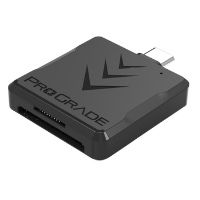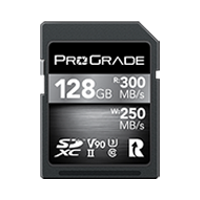As photographers, we’re constantly chasing the perfect composition, looking for ways to place areas of interest or break up the space in pleasing ways to grab the viewer’s attention and drive the story behind our images.
The good composition has been up for debate for as long as cameras have been around. That’s the beauty of photography. Everyone can interpret good differently.
While there will never be a one-size-fits-all approach to composition, and rightfully so, there is a universal tool for composing balanced images that have a sense of harmony––the Golden Ratio. Sometimes also called the golden mean, golden section, or divine proportion.
In this article, we’ll dive deeper into the golden ratio and go over precisely what it is, what makes it so pleasing, and why, when, and how to use it in photography.
What is the Golden Ratio?
As the name suggests, the Golden Ratio, represented by the Greek letter phi (φ), is just a ratio of two quantities. By definition, two quantities are in the Golden Ratio when their ratio is equal to the ratio of their sum to the larger of the two quantities.
Picture a line that is separated into two parts so that when a longer part (a) divided by the shorter part (b) is equal to the sum of (a) and (b) divided by (a).

But don’t let the math equations and complicated definitions discourage you. You don’t need to know any of this to use the Golden Ratio as a compositional tool. Besides, at the end of the day, it all boils down to a ratio of 1.618 to 1. That’s pretty much all you need to remember.
So, simply multiply the size of the one element by 1.618, and voila—you get the size of the other element.
Why the Golden Ratio?
The golden ratio provides a sense of harmony and proportion that is aesthetically satisfying. We may not understand everything about it, but for some reason, images composed following the Golden Ratio appear naturally pleasing to the eye. In fact, even the most minor adjustments that make a composition more accurate to the Golden Ratio significantly impact how we perceive that image.
We seem to be hard-wired to prefer images that are composed following the Golden Ratio. No wonder, it is embedded deep in our DNA, and even our bodies seem to follow this harmonious mathematical ratio. The Golden Ratio also appears commonly in nature. From plants to fruit, from sea waves to hurricane clouds.
Artists and architects have incorporated the Golden Ratio into their work for centuries. Perhaps most notably Leonardo Da Vinci, who even illustrated a book entitled De Divina Proportione (‘The Divine Proportion’).
When we look at a photograph composed following the Golden Ratio, our eyes are naturally guided through the image and drawn to the point(s) of interest.
How to Use the Golden Ratio in Photography?
There are many ways we can use the Golden Ratio as photographers. The Phi Grid and the Fibonacci Spiral are two of the most common options, but feel free to study the Kepler Triangle and the Golden Triangle in more detail as well.
The Phi Grid
The Phi Grid is a grid-based way to apply the Golden Ratio to composing images. It is similar to the Rule of Thirds but with a tiny difference. Both divide the frame horizontally and vertically into thirds, but when the Rule of Thirds divides the frame into equal sections, the Phi Grid follows the 1:1.618 ratio. This pushes the grid lines closer to the center.

Like with the Rule of Thirds, each point where the lines meet is a potential point of interest. Align important elements in your frame along these points to create a visually balanced and exciting image.

The Phi Grid helps emphasize movement and is excellent for photographing multiple subjects. While the Rule of Thirds is usually better for minimalist photographs or when photographing a single subject.

The Fibonacci Spiral
The Fibonacci Spiral is derived from the Fibonacci Sequence––the series of numbers where the following number is found by adding up the two numbers before it: 0, 1, 1, 2, 3, 5, 8, 13, 21, 34 …
0+1=1+1=2+1=3+2=5+3=8 and so on.
When we form squares using those numbers (proportions), place those squares side by side, and draw an arc from the opposite corner of each square, we get a lovely spiral:

Ideally, you should set the focal point of your photograph at the tip of the spiral.
The Golden Spiral is a bit more challenging compositional tool to use, as it makes you consider where you place your main subject as well as everything else in the frame. You want to put other elements or subjects so that they spiral out from the main subject.

That said, the Fibonacci Spiral allows a lot of room for creativity. You don’t necessarily have to apply it to the whole frame. Instead, you can apply it to a single element or subject within your frame.


Remember, when it comes to the Fibonacci Spiral, you can make pretty much anything work: the crown of a tree, the arc of the bridge, the curve of a body posture. You name it. So, it can even be used to compose compelling portraits.

In Conclusion
Deciding which compositional method to use is mostly a matter of artistic opinion. However, you should never force one or the other or any other compositional technique for that matter. Instead, it is always good to consider which approach is most beneficial to a particular image.
The Fibonacci Spiral is a better fit for scenes with more natural curves. The Phi Grid, then again, for scenes with strong leading lines. After all, it can be tricky, if not outright impossible, to fit linear objects inside a spiral.
At the end of the day, photography is not about what compositional technique we use. It’s about creating visually appealing images. Using the Golden Ratio is just one way we can achieve this. But it’s not the only way. There are definitely scenes where you should stick to the classics, like the Rule of Thirds or the Centered Composition and Symmetry.
Take the Next Step
Go to every photo shoot with a smile by putting a ProGrade Digital memory card in your camera. You can find the perfect card for your camera using our free compatibility charts.





